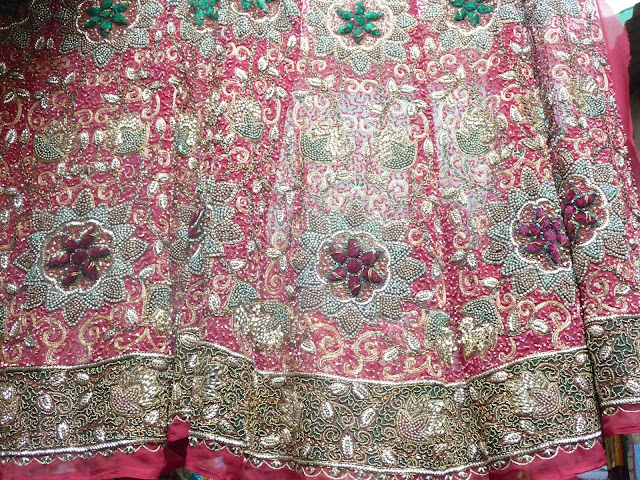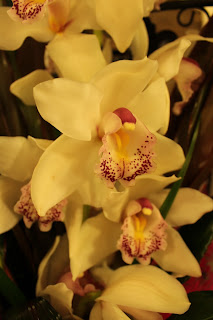As much as I would like to actually go to India, I can't and I was talking to Danielle and she has been! For my inspiration, I know I shouldn't just look at other designer's work and artists - I need to get down to actually looking at India and its colourful culture and traditions as it is bursting with these. As I was looking through the pictures, I could see how the architecture and carvings in temples and mosques were incorporated into fashion and designs.
In this image, there are floral patterns, but the interesting thing that I saw was Islamic calligraphy, and it was also found carved into temples and the walls. It adds a depth and increases the meaning of the piece/wall. It is also known as Arabic script is used by all muslims in their languages. It is used to represent God as muslims refuse to represent God with images. Calligraphy is especially revered among Islamic arts as it was the primary means for the preservation of the Quran. This has a lot of meaning for me as I am a muslim and can read arabic even though I do not understand every word. I think it would be good to experiment with pattern and calligraphy together, as they are a good combination, and certainly in the picture above, they compliment each other.
The sheer amount of pattern and detail in this is just breath taking. I could stand and stare at this for hours! I would like to have a lot of detail in what I do, but I think that before I think I will definitely have to create a small sample which has a lot of detail so I can calculate how long it takes, and if I was to increase the scale, would it still work?
These are some of the temples and sacred buildings in India and I think they are just beautiful. I can see where designers and artists get their motifs and inspiration from - the archway in the picture above is a piece of art in itself. I can see that design being on traditional Indian dress around the neckline - well that's where I would put it!
These monument kind of things have all been hand carved.. They are found in temples, and some of them are eroding as they are really old, which is a shame as they are so intricate.
These are the colours that are used for the festival called holi, and are sold by weight, but they just look gorgeous - like a coloured hill. They remind me of sweets and candy. The festival itself is based on good triumphing over evil, and I think the colours used define that.
Even this little tuck shop that doubles up as the owners house is full of colour and I can see it becoming a pattern - the way that the crisps are hung - I can see this as a pattern on a dress, on a catwalk.
This sari is most likely a bridal sari, and the amount of work that went into creating this is clearly visible. I think embroidery and beading can take a garment to another level, rather than just a plain design.

































